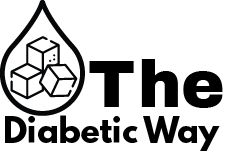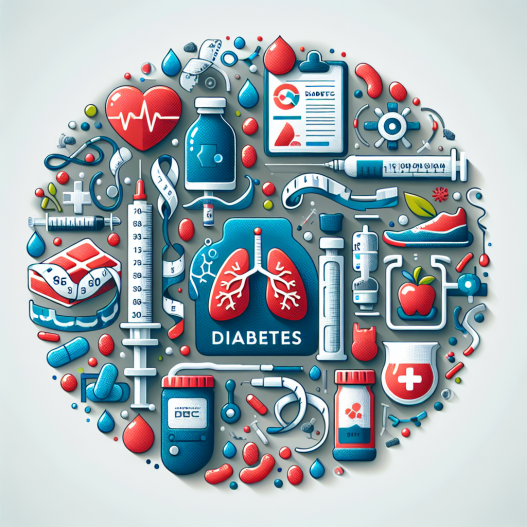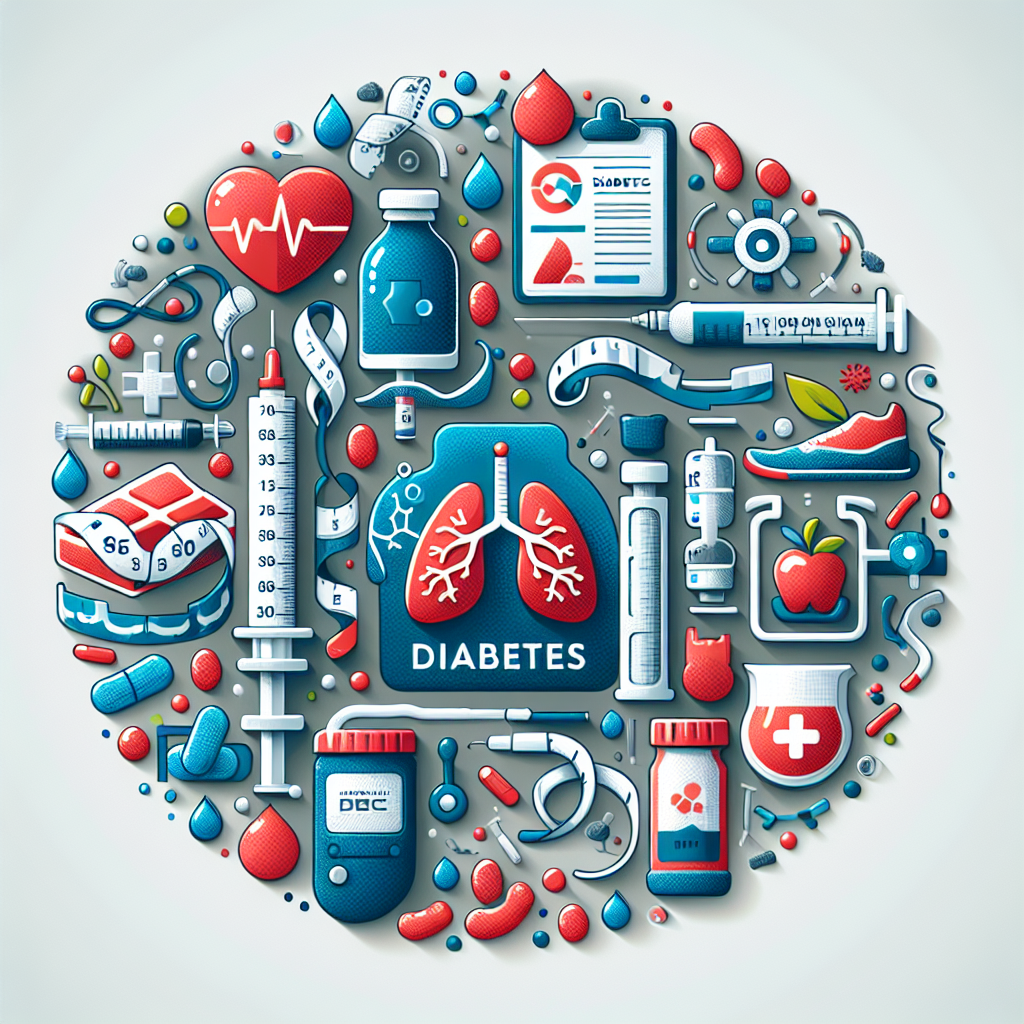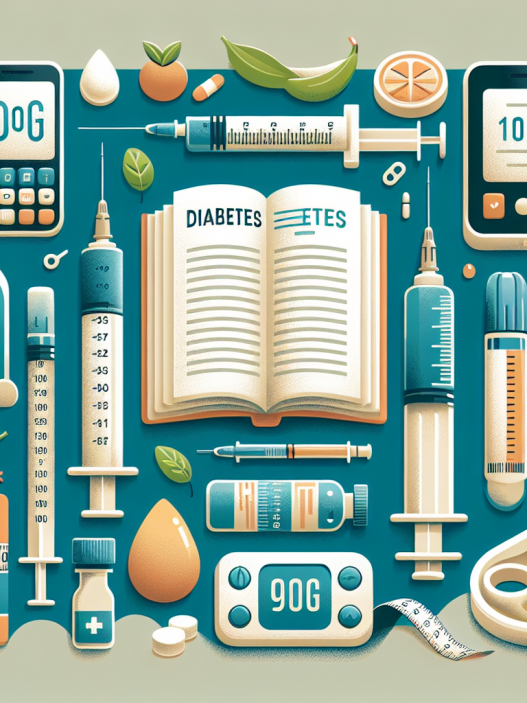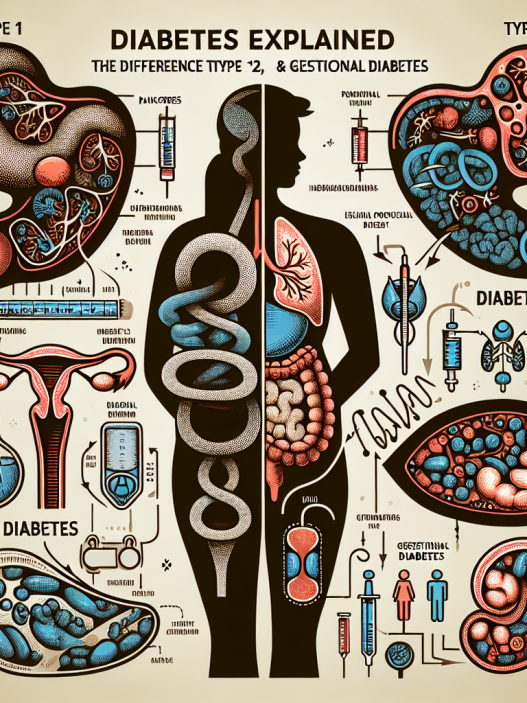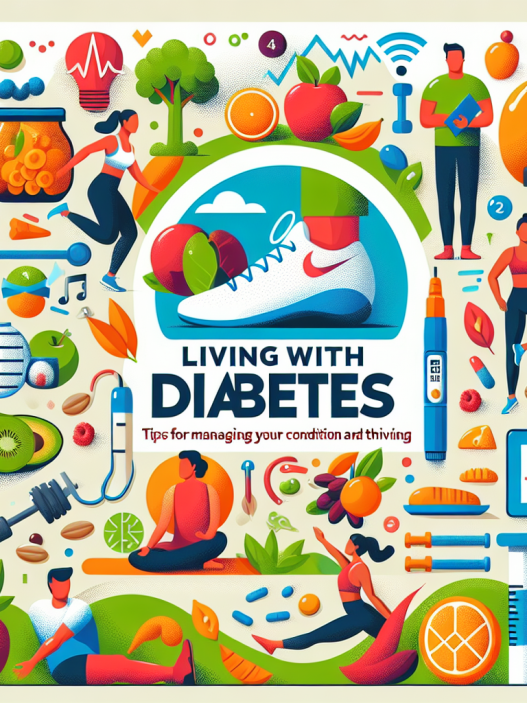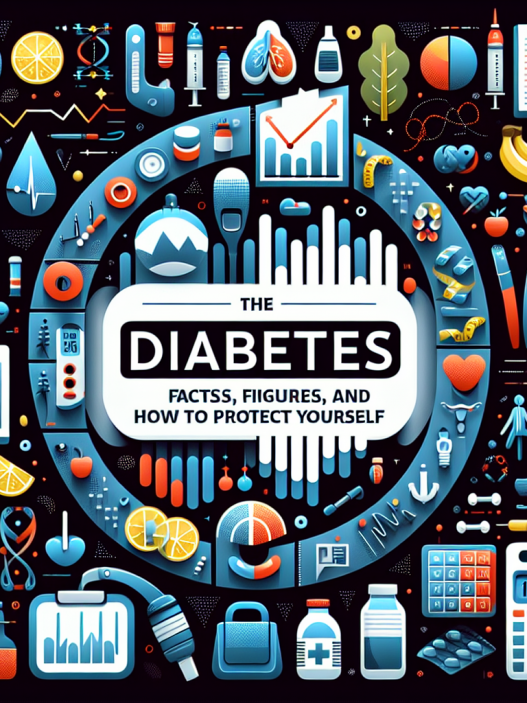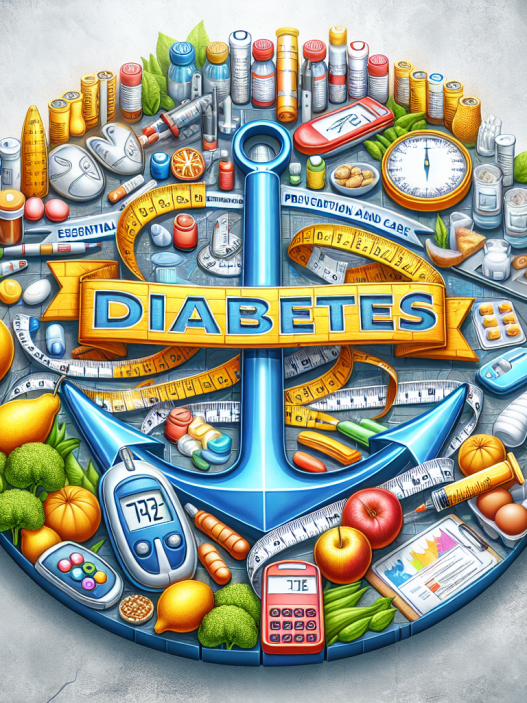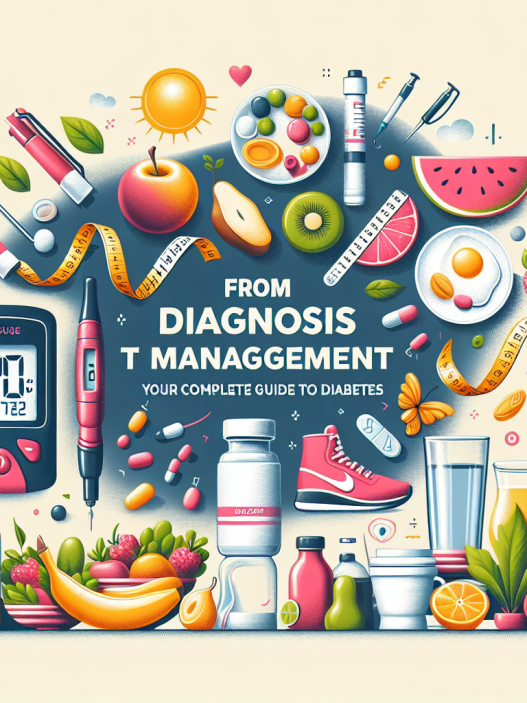[ad_1]
Diabetes is a chronic condition that affects millions of people worldwide, impacting their ability to produce or effectively use insulin. This condition can lead to severe health complications if not managed properly. Understanding diabetes is crucial for patients, caregivers, and healthcare providers alike, as it allows for better decision-making in terms of lifestyle choices and medical interventions. In this article, we’ll delve into the essentials of diabetes, its types, causes, symptoms, management, and prevention strategies.
What is Diabetes? Uncovering the Basics
Diabetes is a metabolic disorder characterized by elevated blood sugar (glucose) levels, which can result from inadequate insulin production, the body’s inability to use insulin effectively, or a combination of both. Insulin is a hormone produced by the pancreas that plays a critical role in converting glucose into energy. When insulin is not available or isn’t functioning as it should, glucose accumulates in the bloodstream, leading to hyperglycemia.
The two primary types of diabetes are Type 1 and Type 2 diabetes, with gestational diabetes occurring during pregnancy also recognized as a significant health issue. Understanding these distinctions is fundamental for grasping the complexities of diabetes management, especially since each type has unique causes, risk factors, and treatment approaches.
Types of Diabetes: Understanding the Differences
Diabetes is primarily categorized into three main types: Type 1, Type 2, and gestational diabetes.
Type 1 Diabetes
Type 1 diabetes, previously known as juvenile diabetes, is an autoimmune condition where the immune system mistakenly attacks and destroys the insulin-producing beta cells in the pancreas. This leads to a total lack of insulin production. Affected individuals typically require lifelong insulin therapy and close monitoring of blood glucose levels. The exact cause of Type 1 diabetes is still unknown, although genetic and environmental factors are thought to play a role. Symptoms often appear suddenly and can be severe, including increased thirst, frequent urination, extreme fatigue, and blurred vision.
Type 2 Diabetes
Type 2 diabetes is by far the most common form of diabetes, accounting for approximately 90-95% of all diabetes cases. It commonly develops in middle-aged or older adults but is increasingly being diagnosed in younger populations due to rising obesity rates and sedentary lifestyles. Unlike Type 1, individuals with Type 2 diabetes still produce insulin, but their bodies do not respond to it effectively, a condition known as insulin resistance. Managing Type 2 diabetes typically involves lifestyle changes such as diet and exercise, and medication may be required when these measures are insufficient.
Gestational Diabetes
Gestational diabetes occurs during pregnancy when the body cannot produce enough insulin to meet the increased demands. It typically resolves after childbirth, yet women who experience it are at a higher risk of developing Type 2 diabetes later in life. Routine screening during pregnancy is essential to identify this condition early, as it can lead to complications for both the mother and the baby, including larger birth weight and risk of jaundice.
Causes and Risk Factors of Diabetes
Understanding the causes and risk factors associated with diabetes is critical for prevention and management.
Genetic Factors
Genetics play a significant role in the development of Type 1 diabetes, with certain genes increasing susceptibility. While Type 2 diabetes also has a genetic component, lifestyle factors are often more influential. A family history of diabetes significantly increases an individual’s risk of developing the condition, particularly if close relatives suffered from Type 2 diabetes.
Obesity and Physical Inactivity
Obesity is one of the leading risk factors for Type 2 diabetes. Excess fat, particularly abdominal fat, interferes with the body’s ability to use insulin. Physical inactivity contributes to this condition, as regular exercise helps maintain a healthy weight, improves insulin sensitivity, and enhances glucose metabolism. Finding ways to incorporate more physical activity into daily routines can significantly reduce the risk of Type 2 diabetes.
Age and Ethnicity
Certain populations are at higher risk for diabetes. For instance, African Americans, Hispanic Americans, Native Americans, and some Asian Americans are predisposed to developing Type 2 diabetes. Additionally, the risk of diabetes increases with age, with individuals aged 45 and older facing a greater likelihood of developing the condition. Awareness and proactive health measures can significantly impact outcomes for at-risk populations.
Recognizing the Symptoms of Diabetes
Early detection of diabetes can prevent severe health complications and improve management outcomes. Understanding the symptoms is crucial.
Common Symptoms
The symptoms of diabetes can vary between individuals and are often subtle in the early stages. Common signs include excessive thirst (polydipsia), frequent urination (polyuria), extreme hunger (polyphagia), fatigue, blurred vision, and slow-healing sores. Individuals experiencing these symptoms should seek medical advice for prompt evaluation and potential testing.
Complications of Untreated Diabetes
If left untreated, diabetes can lead to severe complications affecting various organs and systems. These complications include heart disease, kidney failure, nerve damage, vision problems, and lower limb amputations. Long-term hyperglycemia can affect blood vessel health, leading to complications in the cardiovascular system. Regular check-ups and health screenings can help identify and mitigate such risks early on.
Importance of Regular Monitoring
Individuals diagnosed with diabetes must prioritize regular blood glucose monitoring to manage the condition effectively. Self-monitoring helps individuals understand their glucose fluctuations and make necessary adjustments to their lifestyle, diet, or medications. Frequent consultation with healthcare providers is also vital to ensure optimal management and monitoring of any complications that may arise.
Management Strategies for Diabetes
Managing diabetes effectively requires a comprehensive approach that is personalized to each individual’s needs.
Lifestyle Modifications
For both Type 1 and Type 2 diabetes, lifestyle changes are essential for effective management. Nutrition plays a critical role; a balanced diet that is low in processed sugars, rich in whole grains, lean proteins, and healthy fats can help control blood sugar levels. Additionally, maintaining a healthy weight through regular physical activity is crucial, as exercise enhances insulin sensitivity and helps regulate blood sugar levels.
Medications and Insulin Therapy
Depending on the type and severity of diabetes, medications may be necessary. For Type 1 diabetes, insulin therapy is required to replace the lack of insulin production. In Type 2 diabetes, a variety of oral medications are available to improve insulin sensitivity, decrease glucose production, or delay carbohydrate absorption. Continuous monitoring of blood sugar levels is essential for determining the effectiveness of medications and making necessary adjustments.
Regular Medical Check-Ups
Regular visits to a healthcare provider are vital for anyone living with diabetes. Health professionals can monitor for complications, adjust treatment plans, and provide education on effective management strategies. This also includes routine screenings for diabetic retinopathy, kidney disease, and cardiovascular health, ensuring comprehensive care of patients with diabetes.
Prevention of Type 2 Diabetes: What You Can Do
While Type 1 diabetes cannot be prevented, there are various strategies that individuals can employ to reduce the risk of developing Type 2 diabetes.
Healthy Eating Habits
One of the most effective ways to prevent Type 2 diabetes is through adopting healthy eating habits. Emphasizing a diet rich in fruits, vegetables, whole grains, lean protein, and healthy fats can stabilize blood sugar levels and maintain a healthy weight. Reducing the intake of refined sugars and processed foods is also pivotal in diabetes prevention.
Physical Activity and Weight Management
Regular physical activity is crucial in preventing Type 2 diabetes. Engaging in at least 150 minutes of moderate aerobic exercise weekly can significantly improve insulin sensitivity and help maintain a healthy weight. Strength training is also beneficial, as it can enhance muscle mass, which improves glucose usage. Alongside a balanced diet, maintaining a healthy weight is one of the most effective ways to reduce the risk of developing diabetes.
Regular Health Screenings
Regular check-ups can catch prediabetes early on or identify risk factors that may lead towards Type 2 diabetes. Individuals with a family history of diabetes or those in high-risk ethnic groups should consult healthcare providers for regular screenings and preventive strategies tailored to their needs.
Conclusion: Taking Charge of Your Health
Understanding diabetes is crucial for its effective management and prevention. By recognizing its symptoms, understanding its types, and following appropriate management strategies, individuals living with diabetes can lead healthy, fulfilling lives. For those at risk, adopting preventive measures is essential to stave off the onset of Type 2 diabetes. Empowering oneself with knowledge about this chronic condition can lead to informed health choices, ultimately improving quality of life and overall well-being.
This comprehensive overview on “Understanding Diabetes: What You Need to Know About This Chronic Condition” aims to equip you with the knowledge to navigate your diabetes journey or support your loved ones who may be affected by this condition. Remember, education is the first step towards empowerment, enabling individuals to tackle diabetes boldly and proactively.
With continuous research and advancements in diabetes care, there is hope for better management and improved quality of life for those affected by this common yet complex chronic condition.
[ad_2]
